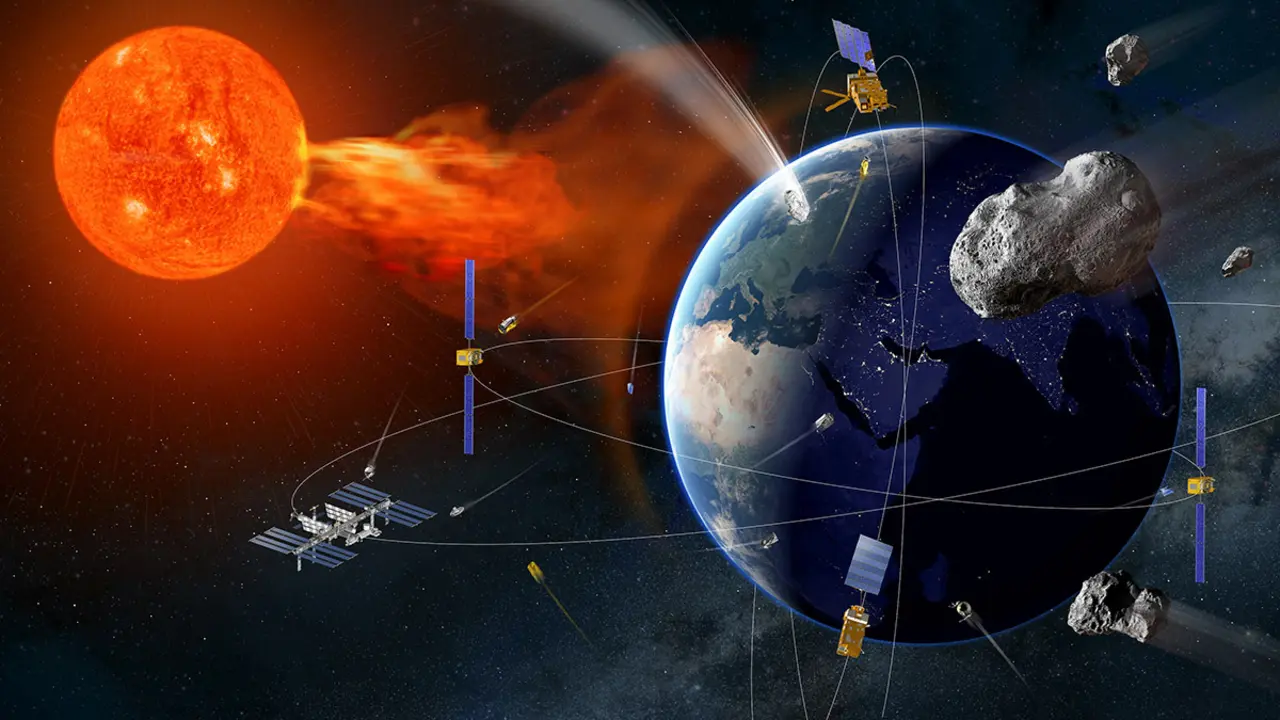The Moon, the big ultra-terrestrial target for Asian powers in 2023

The United States and NASA have taken a break in 2023 from launching their ambitious Artemis programme to return astronauts to the Moon and have taken a sort of sabbatical year.
But the most important space organisation on the planet is not going to stand idly by. It is devoting its best efforts to preparing Artemis II to ensure the survival of the first three astronauts of the 21st century to fly to the Moon. And this, despite the fact that the plans for the second Artemis mission are for the crew to return to our Blue Planet without even attempting to leave their footprints on the lunar surface.
So, between the end of the Artemis I mission with the splashdown of the Orion capsule in the Pacific Ocean on 11 December and the launch of Artemis II scheduled for May 2024, India, Japan and Russia have a golden opportunity to take the lead in the renewed assault on the Earth's natural satellite. The Emirates, which is already on the way thanks to its cooperation with Japanese entrepreneur Takeshi Hakamada, is also trying to do so. China, on the other hand, is focused in 2023 on giving content to its already completed space station.

The four states are competing with each other for fourth place - after Russia, the United States and China - on the short list of nations that have achieved the not so easy feat of reaching the lunar surface and claiming to have placed their flag there. The moon, with its incalculable natural resources and its privileged dominant position on Earth, is the main and closest target of outer space exploration this decade.
But neither India nor Japan, nor Russia, and even less so the Emirates, have the United States' great technological capabilities. All of them, some more than others, are far from being able to send astronauts to Selene on their own. But in 2023 they are determined to touch the lunar soil with robotic missions, either with surface modules or by rolling small autonomous wheel-driven vehicles.

Japan's National Space Exploration Agency (JAXA) has a strong lunar programme, the next step of which is the launch of the SLIM mission, a nearly 600-kilogram probe made possible by Mitsubishi Electric Corporation (MELCO), Japan's major satellite manufacturer.
SLIM is scheduled to lift off aboard a Mitsubishi Heavy Industries (MHI) H-IIA launcher from the Tanegashima base. The date has not yet been finalised, but the goal is to place a surface module and a tiny vehicle near the Moon's equator, in the vicinity of the Mare Nectaris crater.
Its descent will be carried out autonomously thanks to a navigation radar and the probe's advanced optical equipment, with an accuracy of less than a hundred metres with respect to the exact spot chosen. The purpose of the very small rover is to access the interior of the caves discovered in the late 2000s by the Kaguya probe's high-definition cameras.

In the absence of a definite launch date for SLIM - which is accompanied by the XRISM X-ray telescope and is the cause of delays - Japan's first lunar footprint is likely to be Hakuto-R, from the private Japanese company Ispace, which has been on a long trajectory towards the Moon since 11 December. It will reach 1.4 million kilometres from Earth on 20 January, and will then manoeuvre to land on the moon in April.
Inside Hakuto-R is the small UAE Union of Arab Emirates Rashid rover. With four wheels and a mass of 10 kilos, its goal is to be the first object from an Arab country on the Moon. It will travel around Hakuto-R to study the lunar soil with its four cameras and scientific instruments "for at least 14 days", confirms the director general of the Mohammed bin Rashid Space Centre, Salem al-Marri, who is responsible for the Emirati space programme.

The governments of Japan and India have agreed to reach the moon together in 2025 on the LUPEX mission. But before that, the Delhi government's space agency, the Indian Space Research Organisation (ISRO), has the challenge of launching a domestic GSLV rocket in June or July with the Chandrayaan-3 probe, the Asian country's second attempt to land on the Moon.
ISRO has had a new head since 15 January, 58-year-old engineer Sreedhara Panicker Somanath, and his main legacy is to remove the thorn in its side since the failure of Chandrayaan-2 three and a half years ago.

Weighing 3.8 tonnes, Chandrayaan-2 lifted off on July 22, 2019, from the Satish Dhawan space base on India's southeast coast and reached lunar orbit eight days later. But on September 6, its surface module Vikram (626 kg) and the small exploration rover Pragyan (27 kg) crashed into the Moon because of a malfunction in the software governing the approach manoeuvre.
In Chandrayaan-3, the lander and rover are similar but upgraded from those destroyed, prompting Indian Prime Minister Narendra Modi to express confidence that the Indian nation will "touch the Moon in the summer" this year.

And Russia: "The launch window for Luna-25 is planned for July-August," confirmed Yuri Borisov, director general of Russia's space agency, on 21 December. The first mission to our natural satellite since 1976, the 1,750-kilogram Russian probe was built by the expert state-owned company Lavochkin. Its mission is to descend in the vicinity of the South Pole to search for water. But its main task is to validate new technologies that will travel on future Luna-26 and Luna-27 missions, planned for the second half of the decade.
And the United States will not launch to the Moon? The first Commercial Payload Services to the Moon (CLPS-1) mission is scheduled for 25 February. This is a NASA venture, which funds entrepreneurial projects. The lunar module Peregrine 1, an initiative of the company Astrobotic, is travelling on CLPS-1. And CLPS-2 is scheduled to take off in March, with the Nova-C lunar module from the company Intuitive Machines. So in 2023, the incursion to the Moon will continue, but on a global scale, an assault inaugurated by NASA in 2022.









